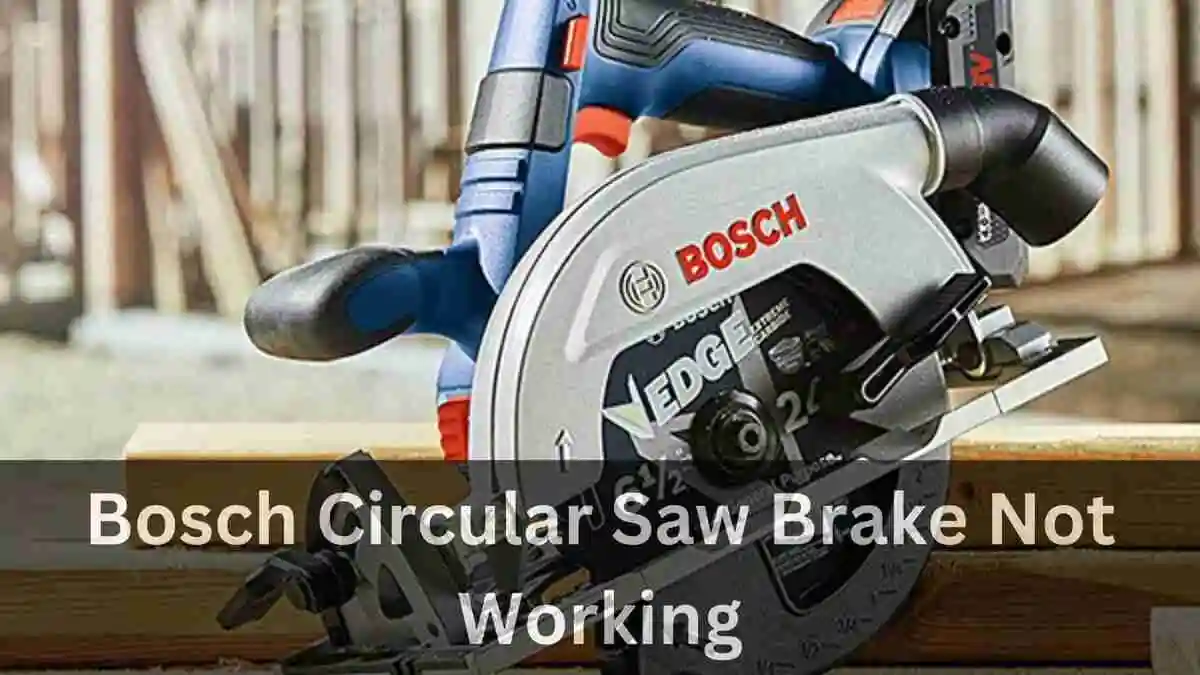The Bosch circular saw is a reliable and powerful tool, widely used in woodworking and construction projects. However, like any mechanical device, it may encounter issues over time. One of the common problems users face is a malfunctioning brake.
In this article, we will explore the potential causes behind a Bosch circular saw brake not working and provide step-by-step solutions to troubleshoot and resolve the issue.
Identifying Potential Causes:
When the brake on your Bosch circular saw fails to function, there are several components that could be contributing to the problem.
The primary culprits are often the carbon brushes, switch, and field. To address these issues, we’ll walk you through a series of steps to diagnose and fix the malfunction.
Bosch Circular Saw Brake Not Working (5 FIXES)
Clean the Commutator:
Before diving into component replacement, it’s essential to eliminate any potential issues caused by dirt or wear on the commutator.
The commutator is a critical part of the motor responsible for reversing the flow of electricity during braking. Over time, dirt buildup can hinder its performance.
To clean the commutator, start by removing the motor housing from the saw. Use 600-grit aluminum oxide sandpaper to clean the commutator in the direction of travel.
Be cautious and clean only in the direction of travel to avoid damaging the commutator. Additionally, use a plastic scribe to clean in between the commutator bars.
Replace the Motor Brushes:
If cleaning the commutator doesn’t resolve the issue, the next step is to inspect and replace the motor brushes.
Worn-out or improperly seated carbon brushes may fail to make adequate contact with the commutator, affecting the brake’s functionality.
Install new brushes and allow them a brief period to conform to the round commutator shaft. This adjustment period ensures optimal contact, restoring the brake to its normal functioning.
Check the Switch and Field:
If the brake issue persists, it’s time to examine the switch and field. Over time, the brake’s effectiveness can diminish due to a failing armature, a faulty switch, or a dirty commutator.
After replacing the motor brushes, inspect the switch and field for any signs of wear, damage, or contamination.
Address any identified issues by cleaning or replacing these components as necessary.This comprehensive approach helps ensure that all potential causes contributing to the brake malfunction are systematically addressed.
Test the Brake:
After completing the cleaning and replacement procedures, it’s crucial to test the brake functionality. Reconnect all the components, ensuring secure and proper connections.
Once confident in the setup, plug the saw back into the power source. Toggle the power switch on and off, observing the brake’s engagement and its ability to stop the blade promptly.
This step is vital for confirming that the troubleshooting steps have effectively resolved the brake issue.
Seek Professional Assistance:
If, despite following the aforementioned steps, the brake still fails to function, it may be time to seek professional help.
Taking your Bosch circular saw to an authorized warranty center ensures that trained technicians with specialized knowledge can diagnose and repair the problem accurately.
Conclusion:
A malfunctioning brake on your Bosch circular saw can disrupt your workflow and compromise safety. By systematically addressing potential causes such as dirty commutators, worn brushes, and faulty switches or fields, you can troubleshoot and resolve the issue.
However, if these steps prove insufficient, seeking assistance from an authorized warranty center ensures a thorough and expert examination of your saw.
Regular maintenance and prompt attention to brake issues will help you keep your Bosch circular saw in optimal working condition, ensuring smooth and safe operation for your woodworking and construction projects.
